Translated into English by Patricia Lima Carlos
We have already described on our site several experimental radios which use the most diverse types of detectors. In fact, we have an article in which we showed that the ancients tried everything to detect radio signals, that is, to obtain semiconductor junctions, from containers with the most diverse substances to even frog legs. We have also saw several experimental radios with detectors such as a razor blade or a radio with steel wool.
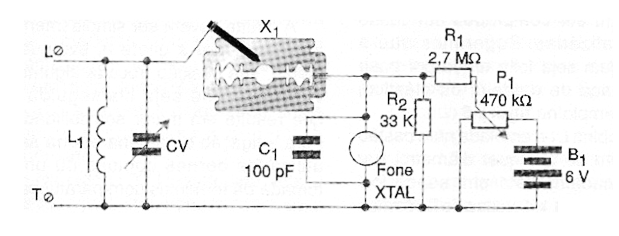
The basic idea is simple: a semiconductor junction or diode rectifies high frequency signals picked up by an antenna and tuned in and so the low frequency modulation which corresponds to the sound can be extracted and applied to a phone to turn into sound.
So that is how the the galena radios were, in which the detector was a galena crystal, as shown in another article.
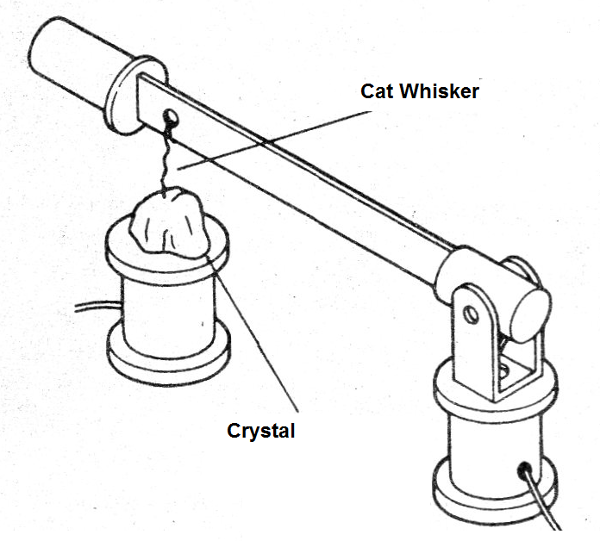
In this way, one can have a very simple radio with the structure shown in Figure 3 and in the place of the diode or galena (D) we can have anything whic performs the functions of a diode, that is, it has a semiconductor junction.
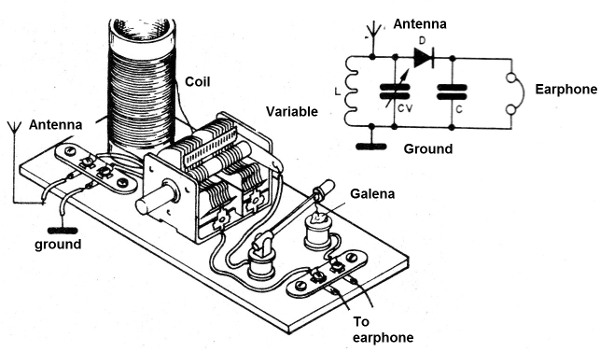
In our case, we start with the fact that a credit card or memory chip consists of an electronic circuit which has many transistors and, therefore, semiconductor junctions with the most diverse configurations. (Figure 4)
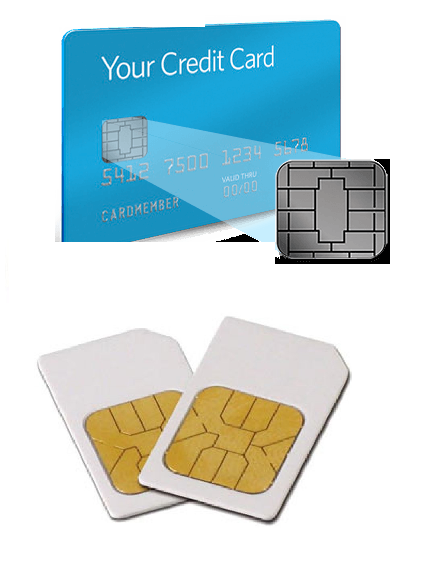
So if we have one of these cards out of use and test the various terminals with a multimeter, we can find a pair of them which behaves like a diode, that is, it has a low resistance in the direct direction and a high resistance in the opposite direction, as shown in Figure 5.
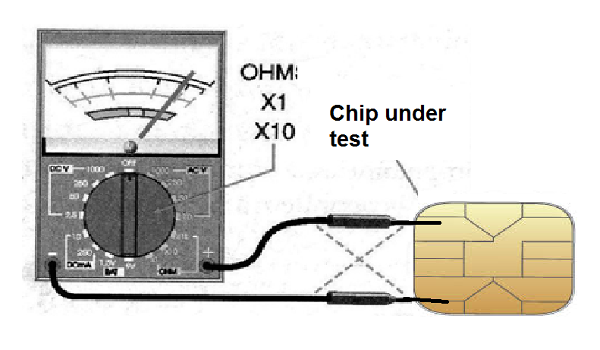
By finding a pair of regions which have low direct resistance and high inverse resistance, we can use it as a detector diode on an experimental radio.
We then have the circuit shown in Figure 6.
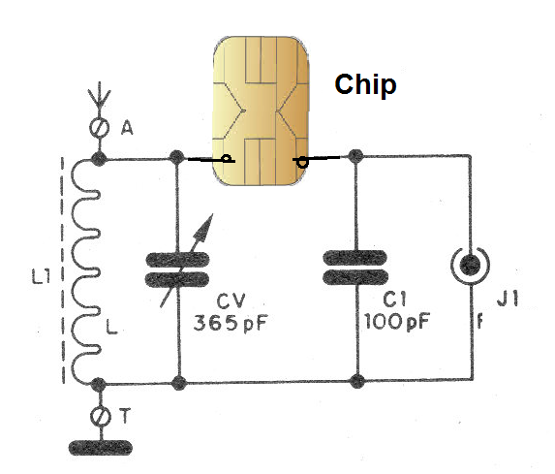
Of course, since this is a radio without amplification stages, we need a long antenna and a good earthing. The antenna can be a wire stretched of 5 up to 30 meters in length (can be hooded) and the grounding can be done on any large metal object.
CV is a variable capacitor obtained from an old transistorized medium-wave radio.
L1 consists of 80 to 100 turns of wire 26 through 30 in a ferrite rod, which may also be obtained from an old transistorized radio.
In Figure 7, we then have the assembly aspect.
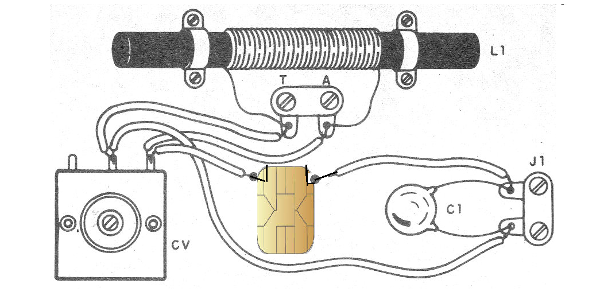
J1 may either be a pair of terminals for connecting to a ceramic or crystal transducer or capsule (of the type used in telephones) such as a jack for connecting a small crystal earphone, as shown in Figure 8.
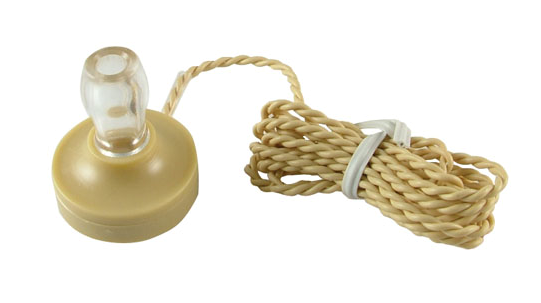
The receiver will pick up local medium-wave stations if you do not live in a very noisy location, subject to interference from fluorescent lamps, machines, motors, etc.



